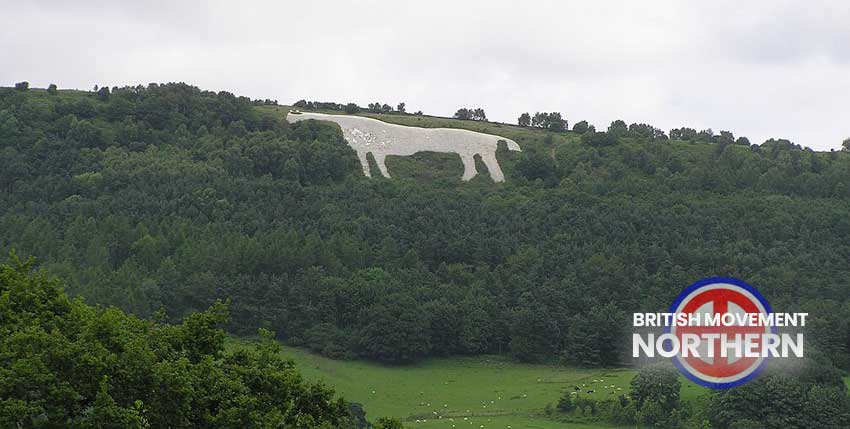An area of the North Yorkshire Moors National Park is to be sacrificed on the altar of ‘Green Energy’. The Sutton Bank Project will be just the thin end of the wedge, a test run for future ‘Net Zero’ and the expansion of ‘Green Energy’ developments across rural England.
The current Labour Government has made much of its commitment to ‘Net Zero’ and the so-called ‘Carbon Neutral’ energy agenda, much of it pushed into Labour Party policy by the minister responsible for energy; the grandly titled Secretary of State for Energy Security and Net Zero, Ed Miliband, the MP for Doncaster North since 2005.
Some Northern mainstream news media has proven to be less than enthusiastic about the Sutton Bank project and has reflected the anxiety and opposition of the people of North Yorkshire, particularly those living in and around Thirsk. However initial media opposition will soon be reined in, and media outlets will be encouraged to support ‘green and environmentally friendly’ government initiatives.
But for now, “Fear battery storage plan could damage Sutton Bank view” headline from 18th February 2025.
“National park chiefs have warned that a planned battery energy storage system (BESS) could damage a view described as “the finest in England” by celebrated author James Herriot. The North York Moors National Park Authority (NYMNPA) has submitted an official objection to plans for the plant on fields at South Kilvington, near Thirsk.
“Applicant NatPower says its 173-acre Belmoor scheme will play an essential role in delivering clean, secure, and affordable energy for the UK. But more than 360 responses from the public to a consultation exercise over the scheme, which has now ended, have raised objections.
“A local pressure group is the Thirsk Against Battery Storage Working to prevent NatPower from developing one of the UK’s largest Battery Energy Storage System (BESS) on greenfield farmland on the edge of the North York Moors.” The group has no connections to the British Movement.
One of the UK’s LARGEST Battery Storage plants is to be built in Thirsk
“NatPower wants to build one of the UK’s largest Battery Energy Storage Systems (BESS) on productive farmland just outside of Thirsk.
“The 1-Gigawatt plant will host 888 Lithium-ion batteries, and will be seen for miles around due to its location near the famous North York Moors and the popular Sutton Bank, known as “the finest view in England”. Its location on a hillside will ensure that it can be seen for miles around.
“Local action group Thirsk Against Battery Storage (TABS) has serious concerns about the suitability of the site, on location, safety, and environmental grounds. We are working to ensure that this plant is not built in this area, but created on brownfield land instead.
“Of course the major energy company NatPower are offering a different explanation and offer distractions to convince the public that everything their project is doing is in the long-term interests of the environment and ‘Green Energy’.
“Why do we need the solar farm?”
“The UK is transitioning to zero and low carbon sources of power. All coal-fired power stations must close by 2025, meaning over a quarter of the UK’s energy generation needs to be replaced. The UK’s climate change ambitions are amongst the highest in Europe, and the aim to achieve net zero carbon emissions by 2050 is set in law.
“By 2050, we could use 80% more electricity than we do today. For example, electric vehicle and heat pump ownership has grown thirty-fold and is set to rise with the abolition of new diesel and petrol cars by 2040.
“Currently, the UK’s electricity price is among the highest in Europe, meaning that we need to find ways of generating more affordable, renewable, and clean electricity. Energy security for the country is now of paramount importance.
“Our proposals are for a new solar development capable of generating up to 49.9 megawatts (MW) of energy, with a battery storage system with capacity of up to 10MW. It would be located about 1.5 kilometres to the southwest of the village of Sutton-on-the-Forest, in North Yorkshire.
“The solar farm will connect into the National Grid through underground cables and a single new aboveground pole adjacent to the existing 132kV overhead power line.
“The solar development will consist of:
Approximately 101 hectares of land, with the solar panels covering approximately 85 hectares.
Solar panels with a power generation capacity of up to 49.9MW.
Battery Energy Storage System (BESS) with a capacity of 10MW.
Solar panels set on lightweight frames in rows spaced 2.5m apart, with a minimum ground clearance of 0.6m and a maximum panel height of up to 3m. As tracker panels, the height of the solar panels will vary from their midday point at 1.83m high, to their full height.
Substation with a control room, storage units and electrical bay.
Inverters and transformers to convert power from DC (Direct Current) to AC (Alternating Current).
Site access roads and internal access tracks through each field for operation and maintenance.
Deer fencing around the site of up to 2m in height.
Underground cables and a single new above-ground pole adjacent to the existing power line.
Approximately 1km of new hedgerow at the site boundary, as well as enhancement of existing hedgerows to screen the development from view and enhance biodiversity.”

Notice the distractions included here to placate the Green lobby with a reference to planting new hedgerows and “enhance biodiversity.” While seeking to ignore the reality of 85 hectares of land being covered by solar panels, the construction of buildings and access roads on what was previously productive farmland and in an area of outstanding natural scenery.
The Labour Government is determined to push ahead with its WEF (World Economic Forum) motivated ‘Green Agenda’. Under the guise of advancing an ‘Environmentally friendly and Carbon Neutral’ set of policies, the government will seek to bring farmers into collaborating with its projects.
At the same time of course the Labour government is battering farmers with its taxation initiatives and other financial pressures, which will encourage farms to sell land for green energy projects and have their land turned over to solar panels and wind turbines.
There are wider implications for rural North Yorkshire here, as the Thirsk/Sutton Bank project is just the first step towards future such ‘Green/Net Zero’ projects. Mainstream media will of course be encouraged to support government ‘Net Zero’ projects and to report favourably on such policies and the involvement of farmers and local authorities in rural areas.
This from the Yorkshire Post newspaper: “Ten farms join the race to reach net zero as part of the Yorkshire Dales National Park and Nidderdale AONB Farm Carbon Project. Ten Yorkshire farms are undergoing a ‘carbon audit’ as part of a project to help them reach net zero.”
Notice how the story is changing to support the ‘Net Zero’ objectives of the Labour government, contrary to the nationwide farmer-tractor protests against the government’s inheritance tax on farmers and farmland, here farmers are being shown to be involved with one of the ‘Net Zero’ projects, yet another distraction strategy.
As stated at the top of this article, the Sutton Bank and Thirsk solar farm project will be just the thin end of the wedge. Once it is up and operating and has local acceptance, the other similar developments will follow across the county.
Note: The famous landmark, the White Horse of Kilburn on the Cleveland Way trail. An area visited by a British Movement ‘Strength Through Joy’ hike several years ago.

Credits:
Main Image: Sutton Bank – Facebook.
Lower Image: The White Horse – Afterbrunel, public domain, via Wikimedia Commons.
Bottom Image: British Movement.
The British Movement welcomes articles for possible inclusion on this site from members and supporters across the North of England. Please remember that we have to operate within the laws of this country; we will not include any content that is against the current laws of the United Kingdom. News reports should be topical and relevant to the regions covered by this website.












